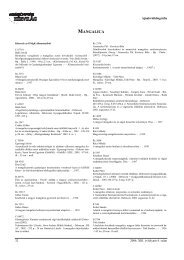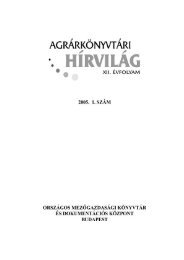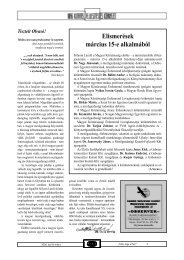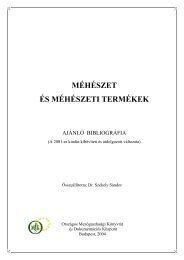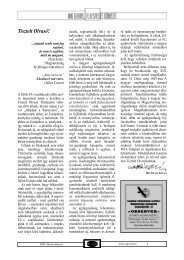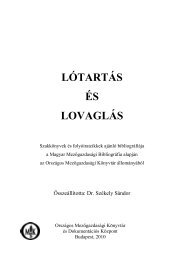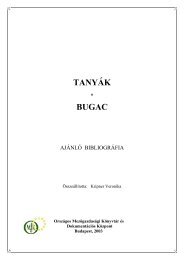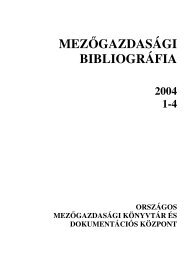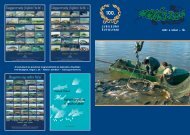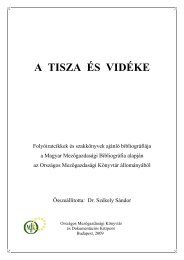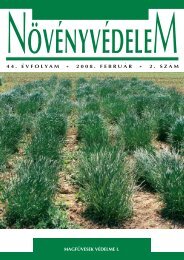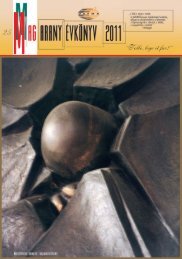hUNGARiAN AGRicUltURAl RESEARch
hUNGARiAN AGRicUltURAl RESEARch
hUNGARiAN AGRicUltURAl RESEARch
Create successful ePaper yourself
Turn your PDF publications into a flip-book with our unique Google optimized e-Paper software.
Figure 3: Kadarka plant with loose clusters and deep coloured small<br />
berries<br />
Figure 4: Kadarka plant<br />
assigned for further tests<br />
Figure 5: Connection between the yield and sugar content of the must of parent vines (2001–2006)<br />
Szekszárd<br />
P.131., P.143., P.147., P.165.,<br />
P.166., P.167.).<br />
The selected candidate clones<br />
were examined in comparative<br />
experiments in Szekszárd<br />
including the different Kadarka<br />
variants from the gene bank as<br />
well as clones, variants from other<br />
vineyards (P172, P173, Virághegyi<br />
kadarka, Mészi kadarka) and<br />
the Csókaszôlô cultivar. Both the<br />
harvest results of the grapes<br />
examined in 2007 and 2008 and<br />
the appreciation of the experimental<br />
wines confirm that the<br />
traits of the selected candidate<br />
clones are superior to those of the<br />
registered P.9 Kadarka clone<br />
(Table 4).<br />
Analyses performed with<br />
molecular markers verify the<br />
28 Hungarian Agricultural Research 2009/3–4



